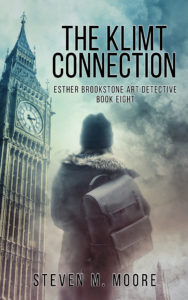Body language vs. dialogue…
Authors have a variety of tools and using them throughout a story can make it more interesting. I’m better at dialogue than body language, but maybe that’s because I think the first is more effective than the second. But the second can be effective in a mystery, though, because it might contradict the first…and that’s one positive for using a variety of tools.
A good detective, for example, learns to read body language, especially in interrogations, because there are tells there that contradict a suspect’s words. I’m certain that most readers don’t have that ability; I certainly don’t. So, even if I describe some body language in a story, assuming I do it correctly, I have to ask myself whether a reader will recognize “what’s being said” without me explaining. That goes against my general minimalist writing philosophy, where I like to give the reader just enough information so they can participate in the creative process. Moreover, it interrupts the flow of the fiction.
I suppose the use of body language can be considered an example of “show, don’t tell,” but “don’t tell” is referring more to excess narrative. Using body language is generally short narrative, but its overuse could be excessive and boring.
In the abstract, dialogue is better than body language, and, whether “writing experts” like it or not, that’s how human beings communicate. Your pet uses body language because it’s not human. Maybe some animals’ innate languages (chimps, dolphins, etc.) are mostly a mix of sounds and body language, but dialogue is more important for us simply because we are human. Writers are human; so are readers.
Perhaps what’s more important are the words used to describe body language and dialogue, direct or indirect. I’ve seen -ly adverbs overused for both, for example. The flow in the prose determines the quality of both body language and dialogue. If the use of either one hinders that flow, that’s not good. Even within a flashback or backstory segment, the flow must move forward. Flow isn’t a tool; it’s a process that’s supported by an author’s toolbox and much more important than any single tool.
***
 Comments are always welcome. (Please follow the rules on the “Join the Conversation” web page. Failure to do so sends your comment to the spam folder.)
Comments are always welcome. (Please follow the rules on the “Join the Conversation” web page. Failure to do so sends your comment to the spam folder.)
The Klimt Connection. Did you miss this “Esther Brookstone Art Detective” series addition, Book Eight in the series? It’s available wherever quality ebooks are sold (but not on Amazon). Better yet: Have a binge-read! Novels #6 and #7 are free PDF downloads. See the list on the “Free Stuff & Contests” web page where you will find other free fiction as well.
Around the world and to the stars! In libris libertas!
